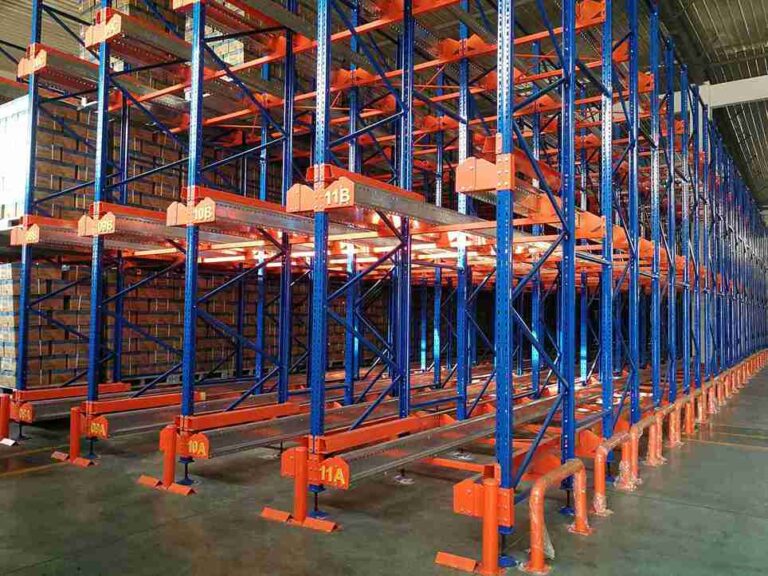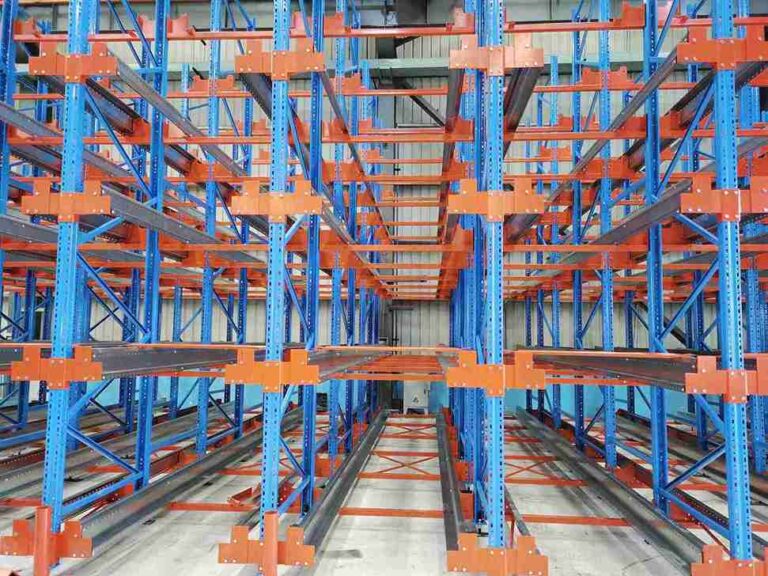📐 "First 50 Enterprise Queries Get Custom 3D Warehouse Design" Plan

Introduction: The Power of Shuttle Racking Automation in Supply Chains
In an era where speed, accuracy, and efficiency dictate success, shuttle racking automation has emerged as a cornerstone of modern warehouse optimization. Unlike traditional storage systems that rely heavily on manual labor, shuttle racking automation leverages advanced robotics, intelligent software, and high-density storage configurations to transform warehouse operations.
This in-depth guide explores how shuttle racking automation enhances warehouse productivity, reduces operational costs, and seamlessly integrates with broader automation ecosystems. From e-commerce giants to pharmaceutical distributors, businesses worldwide are adopting shuttle racking automation to stay ahead in competitive markets.

1. Understanding Shuttle Racking Automation
1.1 What Makes Shuttle Racking Automation Unique?
Shuttle racking automation is a semi-automated or fully automated storage solution where motorized shuttles operate within deep storage lanes to transport pallets with minimal human intervention. Unlike conventional racking, shuttle racking automation maximizes space utilization while accelerating load and retrieval processes.
Key components include:
- Automated shuttle vehicles (self-guided carts that move pallets)
- High-density storage lanes (optimized for bulk storage)
- Integrated control software (syncs with Warehouse Management Systems (WMS))
1.2 How Shuttle Racking Automation Outperforms Traditional Systems
While selective racking requires forklifts to access each pallet individually, shuttle racking automation offers:
- Faster throughput (shuttles move at 1-2 meters per second)
- Higher storage density (up to 60% more capacity than conventional systems)
- Reduced labor dependency (fewer forklifts mean lower accident risks)
2. The Role of Shuttle Racking Automation in Warehouse Efficiency
2.1 Seamless Integration with Broader Automation Networks
Shuttle racking automation works in perfect synergy with:
- Automated Storage and Retrieval Systems (AS/RS)
- Robotic pallet handlers
- AI-driven inventory management
This integration enables:
- Real-time stock tracking
- Predictive analytics for demand forecasting
- Automated replenishment triggers
2.2 Speed and Precision: The Competitive Edge
- Accelerated order fulfillment (critical for e-commerce and 3PL providers)
- 24/7 operational capability (no downtime due to labor shifts)
- Error reduction (automated systems minimize misplacements)
2.3 Cost Savings Through Shuttle Racking Automation
By reducing reliance on manual labor, businesses can:
- Cut labor expenses by up to 50%
- Lower energy consumption (electric shuttles are more efficient than forklifts)
- Decrease product damage (automated handling ensures safer transport)
3. Key Advantages of Shuttle Racking Automation
3.1 Unmatched Storage Optimization
- Narrow-aisle configurations (maximizes vertical and horizontal space)
- Deep-lane storage (ideal for high-volume SKUs)
3.2 Enhanced Inventory Accuracy
- Barcode/RFID scanning ensures precise stock tracking
- Automated cycle counting eliminates human errors
3.3 Improved Workplace Safety
- Fewer forklifts reduce collision risks
- Stable pallet handling prevents load shifts
3.4 Scalability for Future Growth
- Modular design allows easy expansion
- Multi-level shuttle systems for high-bay warehouses
4. Types of Shuttle Racking Automation Systems
4.1 Semi-Automated Shuttle Systems
- Operator-assisted shuttles (ideal for mid-sized operations)
- Lower upfront investment
4.2 Fully Automated Shuttle Systems
- No human intervention required
- Best for large distribution centers
4.3 Multi-Tier Shuttle Racking Automation
- Supports multi-level storage (ideal for cold storage)
- Maximizes cubic space
5. Industries That Benefit Most from Shuttle Racking Automation
5.1 E-Commerce & Retail
- Handles peak season demand spikes
- Speeds up last-mile delivery
5.2 Food & Beverage
- Ensures FIFO compliance for perishables
- Optimizes cold chain logistics
5.3 Pharmaceuticals & Healthcare
- Maintains strict inventory control
- Supports temperature-sensitive storage
5.4 Automotive & Manufacturing
- Manages heavy pallets efficiently
- Aligns with Just-in-Time (JIT) workflows
6. Implementing Shuttle Racking Automation: A Step-by-Step Guide
6.1 Assessing Warehouse Needs
- Analyze SKU velocity (fast vs. slow-moving items)
- Evaluate current bottlenecks
6.2 Selecting the Right Shuttle Racking Automation System
- Semi vs. fully automated
- Single vs. multi-depth lanes
6.3 Integration with Existing Infrastructure
- WMS compatibility checks
- Forklift vs. conveyor loading options
6.4 Calculating ROI & Long-Term Savings
- Payback period typically 3-5 years
- Maintenance cost analysis
7. The Future of Shuttle Racking Automation
7.1 AI & Machine Learning Enhancements
- Predictive maintenance for shuttles
- Dynamic slotting algorithms
7.2 IoT-Enabled Smart Warehouses
- Real-time performance monitoring
- Automated stock replenishment
7.3 Sustainable Warehousing Solutions
- Energy-efficient shuttle designs
- Solar-powered automation
8. Success Stories: Shuttle Racking Automation in Action
8.1 Retail Giant Boosts Storage by 45%
- Challenge: Limited urban warehouse space
- Solution: Multi-tier shuttle racking automation
- Result: 45% more pallet positions
8.2 Pharma Leader Achieves 99.9% Inventory Accuracy
- Challenge: High-value inventory discrepancies
- Solution: RFID-integrated shuttle racking automation
- Result: Near-perfect stock accuracy
9. Debunking Myths About Shuttle Racking Automation
9.1 “Only for Large Warehouses”
- Compact systems available for SMEs
9.2 “ROI Takes Too Long”
- Labor savings often justify costs quickly
9.3 “Maintenance is Complex”
- Self-diagnostic shuttles simplify upkeep
10. Conclusion: Why Shuttle Racking Automation is Essential for Future Warehouses
Shuttle racking automation is not just an upgrade—it’s a strategic necessity for warehouses aiming to boost efficiency, cut costs, and scale operations. As AI, IoT, and robotics evolve, shuttle racking automation will become even more intelligent, making it indispensable for future-ready supply chains.
For businesses considering warehouse automation, shuttle racking automation delivers immediate benefits and long-term growth potential.
Frequently Asked Questions (FAQs)
1. Can shuttle racking automation handle mixed SKUs?
Yes, dynamic lane management allows efficient handling of varied pallets.
2. What’s the typical lifespan of a shuttle racking automation system?
With proper maintenance, 15-20 years is standard.
3. Is shuttle racking automation suitable for frozen storage?
Absolutely—cold-optimized shuttles are designed for sub-zero environments.
4. How does shuttle racking automation compare to AS/RS?
Shuttle systems are more cost-effective for medium-density needs, while AS/RS suits ultra-high-speed operations.
5. Can existing racking be converted to shuttle racking automation?
Yes, retrofitting is possible with compatible structures.




